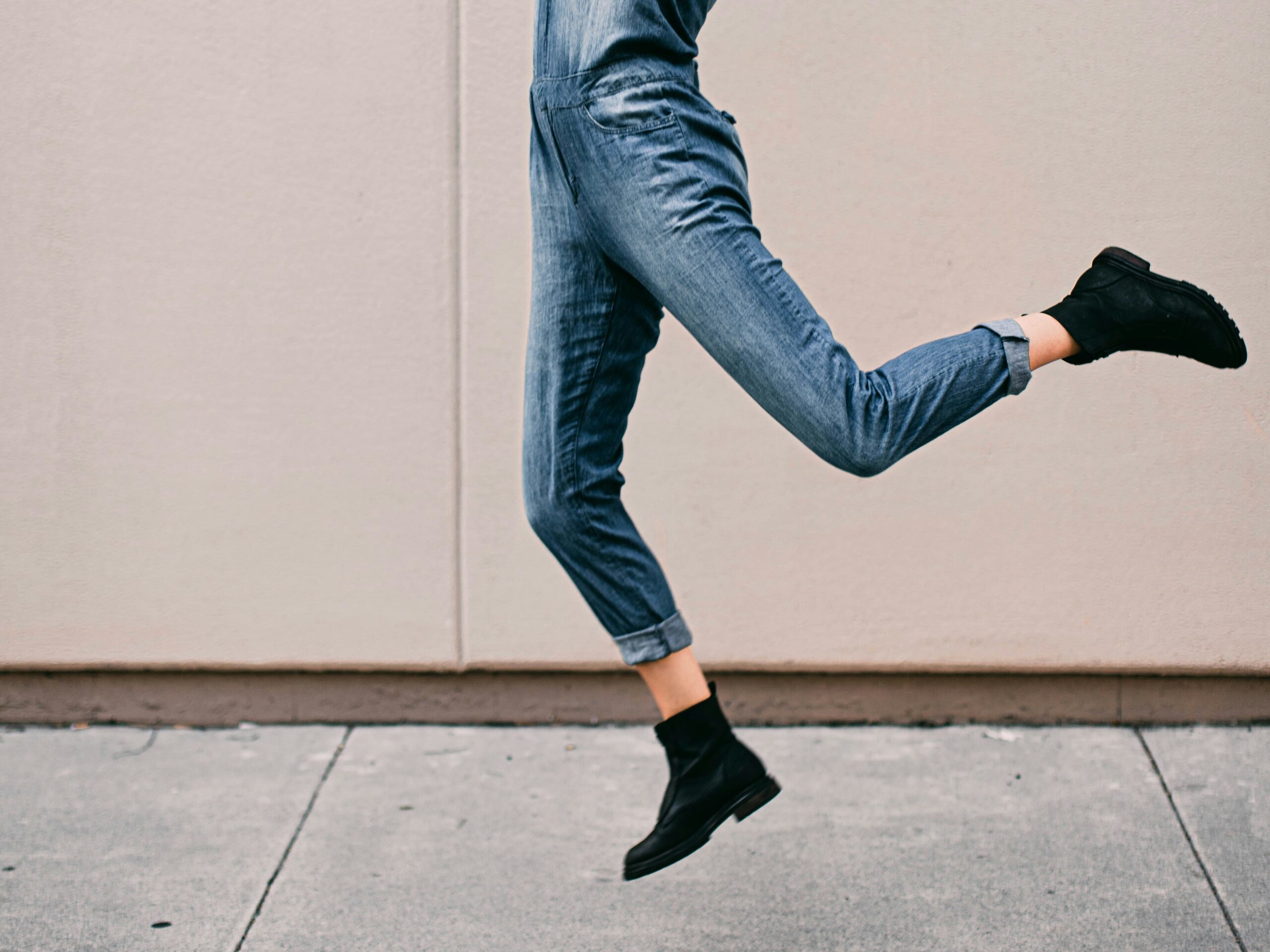Shin splints, or medial tibial stress syndrome, surface on the lower side of the leg near the shinbone and bring pain to this zone. Persons who enjoy sports regularly have to deal with this puzzle when they participate in actions like running, jumping, or dancing because there is an intense effect on their legs for some time.
Shin splints emerge when too much pressure is put on the shinbone and the muscles attached to it, producing swelling in these muscles, tendons, and the bone's outer layer, known as periosteum. It brings about the usual pain and discomfort corresponding with shin splints.
Patients with shin splints may notice pain, sensitive spots, and puffiness on the inner side of their lower legs. They can have a conundrum when doing physical objectives, which can decelerate if they keep fatiguing workouts. If someone rests and does less, it may help the pain from shin splints for a short time. But if they do not treat them as is due and look after their legs accordingly, the shin splints may resurface again and again. It can affect how much how they can do sports or other physical movements.
Shin splints customarily emerge in athletes, primarily those who train in activities that involve repetitive strain on their legs. Studies prove that as many as 15% of athletes experience shin splints![]() , making it a notorious condition encountered by medical squads specializing in sports injuries.
, making it a notorious condition encountered by medical squads specializing in sports injuries.
The actual count of shin splint cases can vary depending on the cluster of people you chart and your criteria for defining a shin splint. While they are notorious, it's feasible to countermeasure or manage shin splints through well-planned training styles, selecting the right footwear, and studying how the organism moves and behaves. Shin splints tend to re-emerge, indicating that extra research and augmented techniques are welcome to resolve the matter.

Patients commonly see shin splints as annoying rather than debilitating; however, if they are not duly treated or addressed wrongly, they can lead to more severe damage. The major concern with shin splints is that they may evolve into stress fractures![]() or persistent pain matters.
or persistent pain matters.
Stress fractures appear when the shinbone experiences excessive continuous pressure and does not have the opportunity to regenerate duly, causing a small crack or break in the bone. If we do not address stress fractures dynamically, they can become more problematic and require an extended period of rest or possibly surgery to heal completely. If a person has shin splints for too long, it can make their prowess to exercise deficient, which can impede their performance and quality of existing.
What's after mention is if someone waves off the symptoms of shin splints, they can get more damage since they adjust the style they walk or move to reduce pain. It elevates stress on miscellaneous muscles and joints, so even if shin splints are not directly damaging to health alone, it is expected to address them without delay and duly to dodge potential worries and maintain the expected quality of well-being.
Multifarious elements, such as immoderate exercise, issues with body mechanics, and invalid training techniques, can cause shin splints.
Repeated activities that involve hard impact on the ground, like running or jumping, can overdo the muscles and tissues around the shinbone.
Excessive stress can lead to inflammation in the muscles, tendons, and outer layer of bones, which is why entities experience pain and unsettle with shin splints.
If a person has flat feet or very curved foot arches, or if their foot turns too much inside when they walk, it affects how stress is applied to the lower leg and can elevate the threat of shin splints.
On top of that, wearing shoes that don't give enough support or suddenly doing more exercise than before may cause shin splints as well.

Individuals tackling shin splints customarily experience uneasiness and tenderness along the inner edge of their shinbone. Such pain routinely surfaces during sporting or exercise events involving consistent impact to the legs, such as running or jumping. Initially, you may experience a gentle and benign pain that can turn sharper and more potent if the condition progresses.
Swelling accompanied by redness in the sector may also develop, adding to the dilemma. Moreover, persons may experience increased pain if they apply pressure to the bone in the front spot of their lower leg or flex their foot upwards.
Symptoms of shin splints tend to intensify with continued physical activity and may stubbornly carry on during rest time. It can be daunting for a sportsperson to engage in sports or other physical activities, which may affect the quality of their routine.

If we do not take care of shin splints or overlook the underlying problems, they may get worse:
If we do not correct problems related to body movement or mistakes in training, there is a higher chance that shin splints will return or lead to more injuries because of too much use.
A medical check is usually needed to see if a person has shin splints, and the person's health history is examined. Doctors typically start with a physical look to check the hurt area for signs of soreness, swelling, or pain. They might ask how much exercise or moving around the person does, what kind of exercises they do, and if there has been any change in their shoes or where they train lately.
They could also suggest taking pictures inside the body, like X-rays or MRIs![]() , to ensure no other reasons for pain, like small breaks in bones or muscle pressure problems. It is necessary to realize that shin splints might not be visible on medical scans, so the doctor's hands-on examination is very important for a correct diagnosis.
, to ensure no other reasons for pain, like small breaks in bones or muscle pressure problems. It is necessary to realize that shin splints might not be visible on medical scans, so the doctor's hands-on examination is very important for a correct diagnosis.
Doctors may also evaluate body movement to find problems causing shin splints, such as excessive inward rolling of the foot or imbalanced muscles.
You use different methods to lessen the pain and swelling when handling shin splints. It is also essential to investigate the reasons for this problem.
Resting is essential because it helps the injury to heal. People with shin splints should cut down or change their exercise for a while so they do not make the pain worse. Putting ice on the sore spot might lessen the hurt and swelling. It helps to put ice on for 15 to 20 minutes many times a day, like after exercise or if you feel pain.
Additionally, stretching exercises for your lower leg muscles and the Achilles tendon are beneficial. This helps make them more flexible and can lessen strain on your shinbone. You should stretch slowly and carefully so as not to cause more irritation. Also, exercises that make the muscles strong in the lower part of the leg, incredibly close to the front and back side of the shinbone, help for better muscle balance and keeping steady. This might lessen the chances it happens again.
People must wear shoes with strong support and enough padding to absorb shocks. This helps control pain in the shin area, especially during physical activity. People with problems with their body mechanics, like flat feet or too much pronation, could use special insoles or arch supports.
Many times, doctors suggest taking medicines like ibuprofen or naproxen![]() . These belong to a group called nonsteroidal anti-inflammatory drugs, also known as NSAIDs, and they work to lessen pain and reduce swelling. However, it is necessary to be careful when using these medicines and always follow the advice of a health professional because if you take them for too long, they might cause adverse reactions.
. These belong to a group called nonsteroidal anti-inflammatory drugs, also known as NSAIDs, and they work to lessen pain and reduce swelling. However, it is necessary to be careful when using these medicines and always follow the advice of a health professional because if you take them for too long, they might cause adverse reactions.
Furthermore, by examining how a person walks and making changes to it, like using specially made insoles or following exercise plans from a physiotherapist, we can prevent shin splints from returning. These experts might use methods such as massaging the muscles, treating them with sound waves, or putting tiny needles into the skin to reduce pain and help recovery.
Frequently, if usual treatments do not work or when problems like stress fractures happen, we might consider surgery as a possibility. But usually, we see surgery as the last option for severe conditions that other therapies did not improve.

How speedily someone gets better from shin splints traditionally relies on how gruesome it is and if the treatment helps.
Typically, if a patient rests enough and follows essential treatments, they can expect to get better and return to their routine tasks in a time that could be as short as some weeks or up to many months. Shin splints often re-surface, especially when wrong movement patterns or lousy training techniques are not fixed.
On top of that, if shin splints evolve into stress fractures or re-emerge again and again, the outlook may get worse because they can need more complicated approaches and take longer to heal.
However, people should take care of it well by resting, using cold treatments, exercising to improve flexibility and strengthen muscles, and making alternations to how they move. In that scenario, they can control shin splints better and lighten the chance they will happen again.

If someone obtains shin splints, they don't always need medical services immediately. However, if the pain is strong and rest doesn't improve it, or they forecast something more gruesome–like a stress fracture may be present–then it's commendable to consult with a medical professional team soon.
Additionally, if there is swelling, redness, or warmth when touched with the pain, or it becomes too painful to bear weight on your leg, this could indicate a more serious issue. It's essential to consult a doctor promptly in such cases.
Moreover, suppose the symptoms remain unchanged after attempting simple remedies at home or someone feels a sudden intense pain in their lower leg. In that case, it is crucial to seek medical assistance immediately. This is necessary to identify and manage any severe conditions correctly.
Shin splints are not often used in emergencies. However, it is essential to monitor the symptoms closely and consult a doctor if you have concerns about them worsening rapidly or being extremely severe.
To countermeasure shin splints, you should increase the power and duration of your workouts step-by-step. It allows your muscles and internal body structures to adapt gently.
Secondly, partaking in diversified sports activities such as swimming or cycling is beneficial since these do not inflict a build-up of stress on the lower leg zone, which can help countermeasure shin splints.
Wearing proper footwear that provides sufficient support and cushioning is also valid to ward off pain in the bones of the lower legs.
Individuals must choose appropriate footwear suitable for their foot variant and activity degree and replace them when they wear out.
Subsequently, practicing proper warm-up and cool-down strategies before and after sports activities promotes muscle preparation and reduces the threat of injury.
Maintaining the right posture and movement while running or jumping is critical for body equilibrium and abstaining from excessive stress on your lower legs.
Last but not least, restoring natural walking caused by issues such as flat feet or uncurbed inward rolling of your foot with orthotics—special shoe inserts![]() —or targeted exercises can be beneficial in halting shin splints.
—or targeted exercises can be beneficial in halting shin splints.